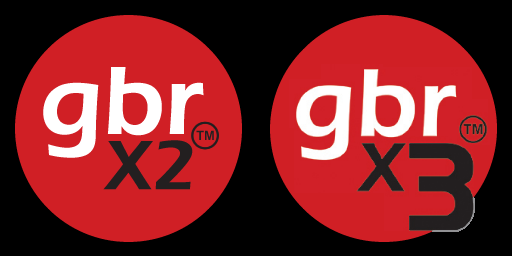The DRC report checks the product for a wide variety of issues. These include:
Contour issues
An arc starting at xxx is marked as a scoring line.
Scoring is done by passing the board between a pair of circular saw blades. This can only be done in a straight line.
Contour layer (Route) is missing.
This error arises if essential board outline data is missing. It should never happen, unless the MIF file has been seriously corrupted.
Diameter (OrigWidth) of tool Dx is out of range for [outer|inner] contour.
Typically, routing tools for outer and inner contours must be between 0.8 mm and 2.4 mm.
Diameter of tool Dx is out of range for [un]plated slots.
Typically, routing tools for slots must be between 0.5 mm and 6.2 mm.
No outer contour found. Perhaps due to invalid polygon.
This error arises if the board's outer profile data is missing. It should never happen, unless the MIF file has been seriously corrupted.
Scoring line starting at xxx is diagonal (not horizontal or vertical).
Scoring lines must be horizontal or vertical. Diagonal scoring is not permitted.
The Dx [outer|inner] contour at xxx may not be large enough for it's xxx mm tool diameter. Tool diameter should be at least 0.1 mm smaller than minimum opening.
An inner or outer contour has one or more notches that are too small to reliably mill with the specified tool diameter. A smaller tool diameter should be specified.
Tool Dx with diameter (OrigWidth) of 0.1mm is only valid for laser cutting.
When cutting flexible layers, a tool diameter of 0.1mm is used. However, this tool must not be used in the rigid portion of a rigid-flex board.
Drill issues
The DRC report includes a Drill hole report for each drill layer. See the DRC operation for an explanation of the anomalies included in the drill hole report.
Overlapping holes (xxx mm and xxx mm) at xxx
Only the first 5 overlapping holes are listed. There are xxx additional overlapping holes.Indicates that two holes of the specified diameters are located at (or near) the specified location. If more than 5 overlapping holes are found, only the first 5 are listed. Usually, additional cases can be spotted by toggling the viewer to Outline mode, by pressing the O key.
This board has plated holes, which are not supported on boards with less than 2 Cu layers.
It is not possible to plate holes unless the board has at least 2 copper layers. All holes on 0 or 1 layer boards should be marked as unplated.
Buildup (stackup) issues
A buildup or stackup describes the materials and thicknesses of the various layers in a PCB. Simply put, there must be a dielectric layer between each copper layer. Dielectric layers are either core or prepreg. In general, a core dielectric is a fully cured material which will not change characteristics during pressing, while a prepreg is a semi-cured material which is able to bind to its surrounding materials during pressing. The most common buildups alternate between prepreg dielectric layers and core dielectric layers, although other approaches are also used (such as sequential buildup, which adds a pair of prepreg layers for each successive pressing).
Board has non standard thickness tolerance of: xxx
The standard thickness tolerance for PCBs is 10% or 0.1 mm (whichever is larger). A non-standard tolerance will increase the manufacturing cost.
Copper layer count (xxx) does not match stackup number (xxx).
There is a mismatch between the number of copper layers in the MIF data, and the number of copper layers in the buildup definition for the board.
HASL surface finish with hard gold will probably not be manufacturable.
If a PCB has hard gold, then a different surface finish should be chosen. This is because it is usually not possible to protect the hard gold pads during the hot air solder levelling process.
Not standard FR4 (low,mid or high Tg.) Material is: xxx
This message indicates that the buildup specifies an FR-4 material other than one of the standard low, mid, or high-Tg materials from IPC-4101/21, /24, /99 or /129.
Rogers 4003C is not UL approved, but board should be marked as UL approved.
A UL mark is specified for the board, but the buildup specifies the use of R4003C material, which is not UL certified.
[Outer|Inner] copper thickness is xxx um
Shows the maximum [outer|inner] layer copper thickness as defined in the buildup definition for the board.
Stackup consists of only prepregs. This may not be manufacturable.
Stackup consists of two consecutive cores in construction. This may not be manufacturable.
Stackup consists of two consecutive prepregs but doesn't have blind vias. This may not be manufacturable.
Stackup is definded with a core in the outmost dielectric layer. This may not be manufacturable.
Stackup seems to be defined with too many cores. This may not be manufacturable.
Max prepreg thickness (xxx µm) is thicker than 400 µm. This may not be manufacturable.The stackup definition does not appear to be consistent with the most common buildup approaches. The manufacturer should be consulted to determine how best to manufacture the desired buildup dimensions.
This board might be too thin for HASL surface finish.
HASL surface finish is typically not possible for buildups with a nominal thickness less than 0.6 mm.
This board might be too thin for scoring.
Scoring is typically not possible for buildups with a nominal thickness less than 0.8 mm.
Flexible and Rigid-flex boards
Not standard polyimide (flex). Material is: xxx
The most common material for flexible dielectrics is polyimide. This message indicates that a different flexible material has been specified.
This board has layers for flex/rigid-flex boards, but is not set as such.
The product is specified as a rigid board, but there are flexible layers in the buildup.
This board is defined as rigid flex, but flexible layer count is set to 0.
A rigid-flex product should specify how many of the layers are flexible layers.
Metal-Based Boards
Min through hole on MBB-boards might have restrictions. Please check with manufacturer for min hole size on MBB-boards.
As a general rule, holes through Metal-Based Boards should be at least 1.0 mm diameter.
Please check and specify which holes must go through the metal carrier and which only must go through the FR-4.
For 2-layer metal-carrier boards, it is usually not necessary for vias to be drilled through the metal carrier. Remarks should be added to the product specifying whether (and which) holes should be drilled through the entire board or only between the two copper layers.
Aluminum stackup specified, but board is not specified as MBB.
The buildup definition specifies a metal carrier (or core), but the product is not specified as a Metal-Based Board.
UL mark issues
UL mark rectangle must be large enough to enclose one of these sizes: 28x2, 25x5 or 17x7.5 mm
These are typical minimum sizes for a manufacturer's UL mark.
UL-mark rectangle is too small on layer xxx
A UL mark box is specified which is not large enough to enclose one of the above minimum sizes.
UL-mark rectangle on layer xxx appears to be in conflict with other objects. The UL-mark should be moved.
Conflicting objects (solder mask openings, holes, etc) were found which appear to be in conflict with placing a UL mark on the specified layer.
UL-mark to be placed on xxx, but this layer does not exist.
A UL mark is specified for placement on a layer which does not exist. The UL mark should be deleted, and recreated on an existing layer.
Other issues
Draw with non round shape Dx in layer xxx at xxx
Only the first 15 of xxx invalid draw errors are listed.The data contains draw (line or arc) features which use a shape which is not round. Earlier versions of the Gerber Format Specification permitted draws with rectangles; but that infrequently used possibility was removed from the format several years ago. The features should be changed to use round shapes in order to prevent generating non-compliant Gerber files. If more than 15 invalid draw errors are found, only the first 15 are listed.
Layer xxx looks like it has objects outside of the board contour.
Use the Crop operation to remove objects which extend outside of the board contour.
No layer found in product for via protection type xxx.
The product specifies via protection, but there is no via protection layer in the product data. This can be remedied by specifying the via protection type of the appropriate drill tool(s).
No shape assigned to xxx feature at xxx. Displayed as 0.5mm diamond.
A feature which requires a shape does not have a shape assigned. This should not happen, unless the MIF file has been corrupted.
[Soldermask|Legend|Cover layer] colors on top and bottom side are different. It is easier to produce with the same colors.
The top and bottom side colors are different. This will normally increase manufacturing costs.
There are very small shapes (down to xxx mm) on layer xxx
As a general rule, features using shapes less than 0.1 mm may be difficult to manufacture. It may be advisable to change the design so that it uses larger features. Note: In the case of overlapping features, this may not be a problem.
xxx layer [exists|does not exist] but color is set to xxx
There is a mismatch between the product's specification for legend, solder mask, or cover layer color and the presence of the layer.
Undefined shape Dx on layer xxx: xxx
An invalid shape was found in the shape list of the specified layer.



